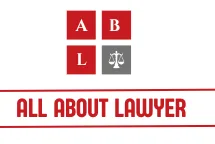Kentucky Property Right-of-Way Laws | Access Rights, and Landowner Obligations
Understanding right-of-way (ROW) laws in Kentucky is crucial for property owners. This article explores key aspects of ROWs, including ownership, maintenance responsibilities, and potential conflicts. Whether you’re a new homeowner or a long-time Kentucky resident, knowing your rights and obligations regarding property easements can save you time, money, and legal headaches.
This guide is intended for Kentucky property owners who want to understand their rights and responsibilities regarding property right-of-ways.
Table of Contents
What is a Right-of-Way?
A right-of-way is a legal right granted to a person or entity to use a specific portion of another’s property for a designated purpose. In Kentucky Property Right-of-Way Laws commonly include:
– Public utilities (electricity, water, sewer)
– Transportation (roads, sidewalks)
– Drainage systems
It’s important to note that a right-of-way differs from outright ownership. While an easement grants usage rights, the property owner typically retains ownership of the land beneath the ROW.

Ownership and Responsibility
Who Owns the Land Under a Right-of-Way?
In most cases, the property owner retains ownership of the land beneath the ROW. This means that while you may have a utility easement running through your yard, you still own that portion of your property. However, your use of that area may be restricted by the terms of the easement.
Maintenance Responsibilities
Responsibilities for maintaining the ROW are typically split between the property owner and the entity with the easement. For example:
– Property owners may be responsible for basic upkeep like mowing grass
– Utility companies usually handle maintenance of their equipment and infrastructure
Specific duties can vary, so it’s crucial to review your property deed and consult Kentucky statutes (such as 20 KAR 18:150) for detailed information.
Related Articles For You:
Minnesota Towing Laws on Private Property
Can Neighbours Object to a Lawful Development Certificate?
Common Right-of-Way Issues
Encroachment
Property owners should avoid building structures or planting trees that may obstruct the ROW. Encroachment can lead to legal disputes and may require removal of the offending structures or vegetation at the owner’s expense.
Access and Use
The entity with the easement has the right to access and use the ROW for its designated purpose. However, they must stay within the defined boundaries and purpose of the easement. Exceeding these limitations could be considered trespassing.
Resolving Disputes
If you find yourself in a disagreement over a right-of-way on your property, consider these steps:
1. Consult Your Property Deed:
Property deeds often contain detailed information about existing ROWs.
2. Contact Relevant Authorities:
Reach out to the entity with the easement or appropriate government agencies for clarification.
3. Seek Legal Advice:
For complex disputes, consulting with a Kentucky real estate attorney may be necessary.
Conclusion
Understanding Kentucky’s right-of-way laws empowers property owners to protect their interests and avoid conflicts. By familiarizing yourself with ownership, maintenance responsibilities, and common issues, you can ensure a smoother experience regarding easements on your property.
Remember, while this guide provides a general overview, each situation can have unique aspects. Consulting with a legal professional for specific situations is always recommended to fully protect your property rights in Kentucky.
FAQs
Q: Can I deny access to my property for right-of-way maintenance?
A: Generally, no. The entity with the easement has the right to access the ROW for maintenance within reasonable limits. However, you can inquire about scheduling access to minimize disruption to your daily life.
Q: Who is responsible for mowing the grass in a right-of-way?
A: This depends on the specific easement agreement and local regulations. In some cases, the property owner may be responsible for mowing, while in others, the entity with the easement may handle it. Check your property deed or contact local authorities for clarification.
Q: Can I build a fence around the right-of-way on my property?
A: Building permanent structures on the ROW is generally not recommended. However, some low-profile fencing might be permissible depending on the easement and local ordinances. It’s always best to consult relevant authorities before installing any structures near the ROW.
Q: How do I find out if there’s a right-of-way on my property?
A: Check your property deed, which should list any existing easements. You can also contact your local county recorder’s office or hire a professional land surveyor to assess your property.
Q: Can a right-of-way be removed or altered?
A: While it’s possible to modify or terminate a right-of-way, it’s often a complex legal process. Both the property owner and the entity holding the easement typically need to agree to any changes. Consult a Kentucky real estate attorney for guidance on this process.
By understanding these key aspects of Kentucky property right-of-way laws, you’ll be better equipped to navigate easement issues and protect your property rights.
About the Author

Sarah Klein, JD, is a former civil litigation attorney with over a decade of experience in contract disputes, small claims, and neighbor conflicts. At All About Lawyer, she writes clear, practical guides to help people understand their civil legal rights and confidently handle everyday legal issues.
Read more about Sarah
